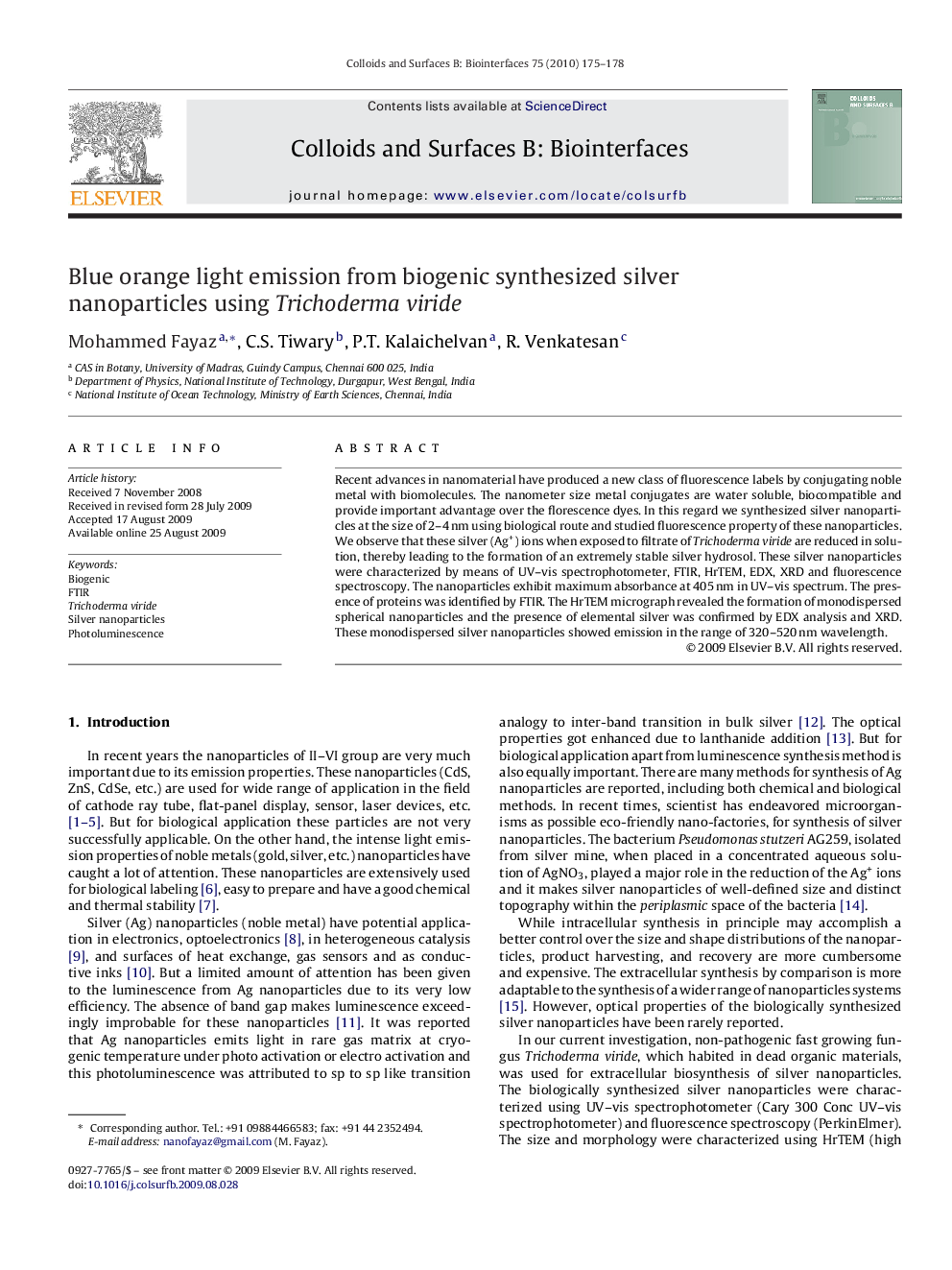| Article ID | Journal | Published Year | Pages | File Type |
|---|---|---|---|---|
| 601954 | Colloids and Surfaces B: Biointerfaces | 2010 | 4 Pages |
Recent advances in nanomaterial have produced a new class of fluorescence labels by conjugating noble metal with biomolecules. The nanometer size metal conjugates are water soluble, biocompatible and provide important advantage over the florescence dyes. In this regard we synthesized silver nanoparticles at the size of 2–4 nm using biological route and studied fluorescence property of these nanoparticles. We observe that these silver (Ag+) ions when exposed to filtrate of Trichoderma viride are reduced in solution, thereby leading to the formation of an extremely stable silver hydrosol. These silver nanoparticles were characterized by means of UV–vis spectrophotometer, FTIR, HrTEM, EDX, XRD and fluorescence spectroscopy. The nanoparticles exhibit maximum absorbance at 405 nm in UV–vis spectrum. The presence of proteins was identified by FTIR. The HrTEM micrograph revealed the formation of monodispersed spherical nanoparticles and the presence of elemental silver was confirmed by EDX analysis and XRD. These monodispersed silver nanoparticles showed emission in the range of 320–520 nm wavelength.
